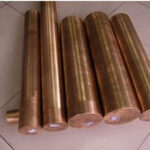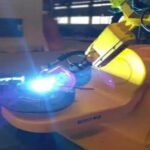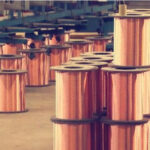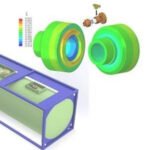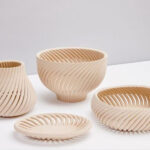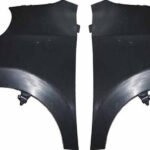In recent years, under the general market environment of “plastics instead of steel”, the inclination of policies has brought good prospects for the plastic products industry. The output of plastic products in China has increased significantly compared with the same period last year. With the improvement of living standards year by year, people’s environmental protection requirements for plastic products have gradually increased. Green and low-carbon have become the consensus of the industry. Only by continuously improving the quality of plastic products, broadening their uses, and entering the high-end market can we usher in more development. opportunity. Daily-use plastic products are the most familiar and commonly used types of plastics. From plastic bags, plastic wrap to water cups, mobile phone cases, etc., the daily-use plastic products around us can be described as dazzling. The editor of this article will talk to you about daily plastic products
According to statistics from the “2018-2023 China Plastic Products Industry Market Prospects and Investment Opportunities Research Report”, the cumulative output of China’s plastic products in 2017 was 75.155 million tons, a cumulative increase of 3.4%. According to data from the China Business Industry Research Institute, China’s cumulative output of plastic products is expected to reach 77.193 million tons in 2018, a cumulative increase of approximately 3.1%. Among them, the cumulative output of China’s daily plastic products in 2017 was 6,651,400 tons, a cumulative increase of 5.8%.
First of all, let’s count down the types of daily-use plastic products. Generally speaking, plastic products can be classified according to the following methods.
Table of Contents
1. According to the molding method and product structure, it can be divided into compression molded products, transfer molded products, thermoplastic foam structure products, blow molded products, thermoformed products, waste-free molded products, rotational molded products, forged molded products, extrusion Produce molded products, reinforced and laminated products, etc.
2. According to different raw materials, it can be divided into plastic products such as polyethylene, polypropylene, polyvinyl chloride, phenolic resin and amino plastic.
3. According to product geometry and usage, it can be divided into plastic pipe, plastic film, plastic plate and sheet, plastic wire, and plastic tape. Plastic bags, artificial leather, plastic building materials, foamed plastics, plastic containers, plastic shoes, wires, cables, plastic industrial parts, daily plastic products, arts and crafts plastic products, and plastic products for culture, education and sports.
3-1. Plastic pipes include polyethylene plastic pipes (also divided into ordinary pipes, gas pipes, agricultural concealed pipes, composite pipes, calcium plastic pipes, LLDPE pipes), polypropylene pipes (also divided into ordinary pipes, hard PVC pipes for water supply, PVC calcium plastic pipes, ordinary soft PVC pipes, dimensional plastic pipes, PVC sandwich pipes, corrugated pipes, low foam PVC pipes, winding pipes, spring pipes and anti-static pipes), other thermoplastic plastic pipes and thermosetting plastic pipes, etc.
3-2. Plastic films include PE film (ordinary, greenhouse, floor covering, heat shrink packaging, non-slip, cast flat film, air cushion film, LLDPE blown ultra-thin film, calendered film, etc.), PP film (blown packaging, extrusion Out of cast, biaxially oriented film), PVC film and other plastic films.
3-3. Plastic plates and sheets include PE, PP, PVC plates and sheets, other thermoplastic plates and sheets, thermosetting plastic plates, etc.
3-4. Artificial leather (such as direct scraping method PVC artificial leather and foam artificial leather, indirect scraping method artificial leather, calendering method and extrusion method, rotary screen coating method artificial leather) and other artificial leather (dry, wet PU, PU/PVC) Compound, PE, PA artificial leather, rubber-plastic-nylon canvas leather).
3-5, plastic wire, net, belt, bag (PE, PVC, PA, PP monofilament, PP flat wire, PVC hair wire, PP, PVC strapping and strapping rope, PVC conveyor belt and insulating tape), plastic extrusion Out of the net and PE extruded foam net, plastic cooking bag, self-sealing belt, PE, PP packaging bag, HDPE, LDPE shopping bag, plastic cement packaging bag.
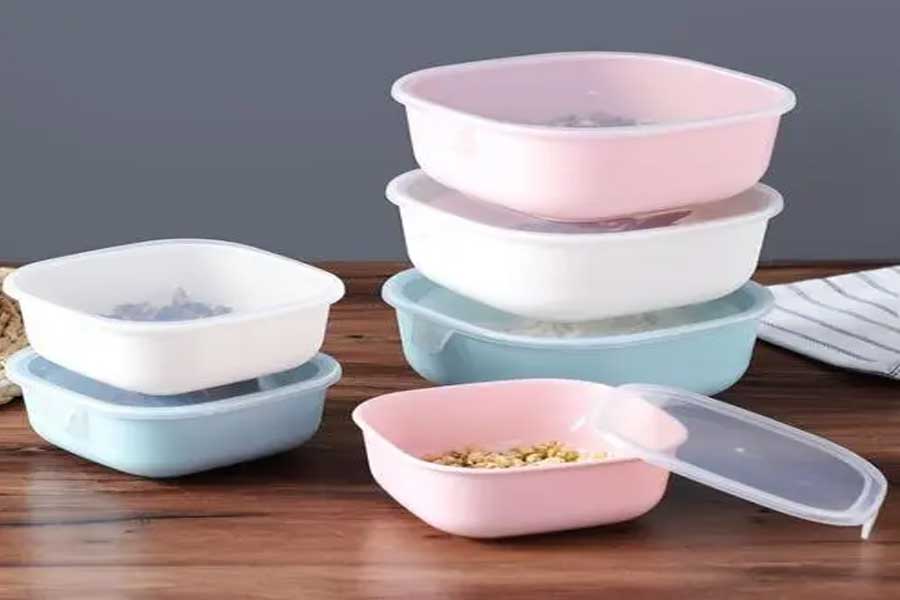
3-6. Plastic containers, hollow containers such as blow molding barrels, extrusion and injection blow molding bottles, extrusion-stretch blow molding bottles, injection-stretch blow molding bottles, extrusion-blow molding large hollow containers, rotational molding Containers, composite hollow containers, plastic turnover boxes, corrugated boxes and suitcases, etc.
3-7. Plastic shoes and soles: PVC all-plastic sandals, rain boots, miner shoes, injection foam sandals, plastic-sole imitation straw sandals, foam slippers, PVC soles, etc. and other plastic shoes (PE foam-soled sandals, slippers, cloth shoes) ; PU foam sole sandals, slippers, leather shoes; SBS sole travel, cool, cloth shoes).
3-8. Foam plastic and its products, soft such as: PE coil and seat cushion, PVC soft, PU soft and its composite materials; hard such as: PE life jacket, swimming ring, PS, PU and PU insulation cover Tube.
4. Various building materials, such as: calendered PVC floor leather, extrusion calendered PVC floor leather, scraping PVC floor leather, rotary screen coating PVC floor leather, roll coating PVC floor leather; PVC floor tiles, plastic carpets , Red mud and fly ash filled PVC floor tiles, plastic wallpaper, roofing materials, such as waterproof membranes, PE foam ceilings, PVC flame-retardant ceilings; doors, windows and other special-shaped materials and products, such as stair railings, step boards, partitions Walls, screens, sinks, floor slats and assembled plastic furniture, etc.
5. Plastic sanitary ware, such as plastic integral toilet, artificial marble sanitary ware and stone.
6. Plastic wires and cables. Such as cable materials (PE, PP, PVC), plastic wires, cables (PVC, cross-linked PE) and other plastic products.
7. Industrial plastic products: ①Chemical equipment (hard PVC, hand lay-up glass fiber reinforced plastic, winding molded glass fiber reinforced plastic, etc.); ②Plastic sealing materials (PVC, PTFE and other sealing gaskets, PP sealing strips); ③Electrical products (phenolic aldehyde) Electrical products such as plastics, amino plastics and unsaturated polyesters); ④Reinforced thermosetting plastic industrial parts (glass fiber reinforced phenolic and epoxy, unsaturated poly DS, asbestos fiber reinforced and metal fiber reinforced phenolic plastic parts); ⑤Thermoplastic Plastic industrial parts (PVC injection pipe fittings, valves, welding rods, reinforced PP industrial parts, cast nylon parts, MS copolymer resin injection high-transparency engineering parts).
8. Plastic products for daily use, arts and crafts, such as polyolefin, styrene hair combs, soap trays, tea trays, washboards, plastic tableware, PE cutting boards; plastic decorative strips for furniture, plastic window screens, inflatable toys, balls; PVC drawn tablecloths, carbon fiber reinforced plastic badminton rackets, disposable syringes, printing, bronzing, electroplating plastic products, medical PTFE expanded products, cervical cell harvesters, etc.
The quality of daily-use plastic products mainly refers to the appearance and physical and mechanical properties of the products. For some products, chemical properties or hygiene requirements must also be considered. Due to the different raw materials, structures and uses of daily-use plastic products, their physical and mechanical properties are different.
Here are only a few commonly used inspection indicators.
1. Proportion
Each plastic has a certain range of specific gravity. For plastics of the same volume, if the specific gravity is large, the weight will be heavier. On the contrary, if the specific gravity is small, the weight will be light. For example, plastic cups of the same size and volume, polypropylene (specific gravity 0.90—0.91) cups are lighter than polyethylene (specific gravity 0.91 to 0.96) cups. All products with a specific gravity greater than one sink into the water, while those with a specific gravity less than one float in the water.
2. Tensile strength
Tensile strength refers to the stress that a unit area of plastic can withstand when it is broken within a specified time. Its unit is kg/cm². For a rope of the same thickness, the higher its tensile strength, the greater the tensile force it can withstand.
3. Elongation at break
Different products have different requirements for elongation at break. The elongation at break is large, and the elasticity of the product is high. For plastic shoes, I hope it has high elasticity and is comfortable to wear. Therefore, a greater elongation at break is required. As for the plastic rope, the elongation at break is required to be small, so that the items can be tied tighter.
4. Hardness
Hardness generally refers to the hardness of the plastic surface. Take plastic soles as an example. They are too hard and inconvenient to wear, but too soft, wearing shoes on the gravel road, will also hurt the soles of the feet. Therefore, when the plastic shoe sole leaves the factory, it is stipulated that its hardness cannot be greater than 75 degrees (Shore). In this way, the shoes can be moderately hard and comfortable to wear.
5. Wear resistance
Plastic shoes are the same as other cloth shoes and rubber shoes. When walking, the soles of the shoes are often worn out due to the rough ground. Good quality shoes are more wear-resistant and last longer. Therefore, when consumers buy shoes, their first concern is whether the shoes are durable or not, and how long can they be worn? In this way, in order to ensure that the shoes have a certain wearing time and improve product quality, they must determine their wear resistance. performance.
The appearance of daily-use products is generally appraised by seeing and touching. The internal physical and mechanical properties of the products must be tested with certain measuring instruments and tested according to the methods prescribed by the state to assess the physical and mechanical properties of various plastic products. Understanding the above indicators will allow you to choose better quality plastic products.
Daily-use plastic products have penetrated into all aspects of our lives. We need to pay special attention to two points: on the one hand, we must choose reliable quality products to prevent plastic products from harming our family members; on the other hand, we must pay attention to the environmental protection of plastic products. Sex, scientific use, to avoid irreparable damage to the earth caused by plastic products.
Link to this article: What about plastic products for daily use?
Reprint Statement: If there are no special instructions, all articles on this site are original. Please indicate the source for reprinting:https://www.cncmachiningptj.com/,thanks!
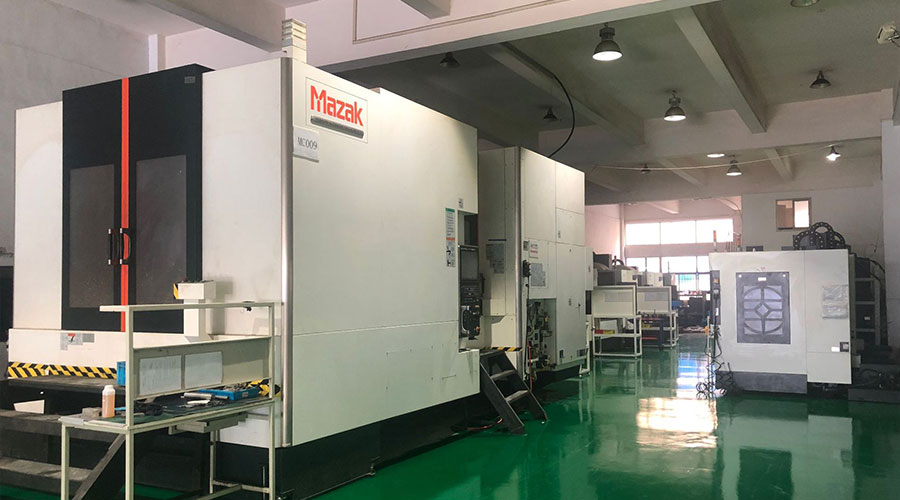 Sheet metal, beryllium, carbon steel, magnesium, 3D printing, precision CNC machining services for heavy equipment, construction, agriculture and hydraulic industries. Suitable for plastics and rare alloys machining. It can turn parts up to 15.7 inches in diameter. Processes include swiss machining,broaching, turning, milling, boring and threading. It also provides metal polishing, painting, surface grinding and shaft straightening services. The production range is up to 50,000 pieces. Suitable for screw, coupling, bearing, pump, gearbox housing, drum dryer and rotary feed valve applications.PTJ will strategize with you to provide the most cost-effective services to help you reach your target,Welcome to Contact us ( [email protected] ) directly for your new project.
Sheet metal, beryllium, carbon steel, magnesium, 3D printing, precision CNC machining services for heavy equipment, construction, agriculture and hydraulic industries. Suitable for plastics and rare alloys machining. It can turn parts up to 15.7 inches in diameter. Processes include swiss machining,broaching, turning, milling, boring and threading. It also provides metal polishing, painting, surface grinding and shaft straightening services. The production range is up to 50,000 pieces. Suitable for screw, coupling, bearing, pump, gearbox housing, drum dryer and rotary feed valve applications.PTJ will strategize with you to provide the most cost-effective services to help you reach your target,Welcome to Contact us ( [email protected] ) directly for your new project.
Link to this article:What about plastic products for daily use?
Reprint Statement: If there are no special instructions, all articles on this site are original. Please indicate the source for reprinting.:Cnc Machining,Thank!^^

